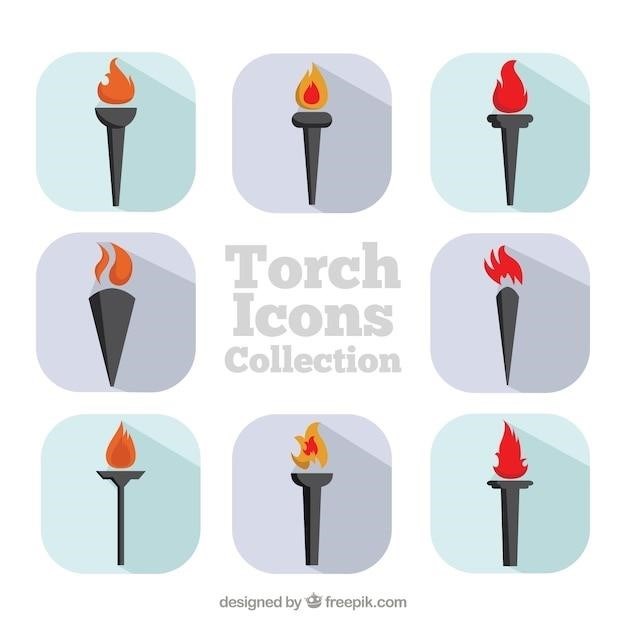Rebecca Yarros, a rising star in the romance genre, captivates readers with her compelling narratives. Her latest offering, “Iron Flame,” promises another gripping tale.
The readily accessible PDF format allows for immediate gratification, enhancing the reading experience for many.
Intriguing cover art and positive early reviews fuel anticipation for “Iron Flame’s” enthralling story.
A. Rebecca Yarros’s Rising Stardom
Rebecca Yarros has rapidly ascended to prominence in the contemporary romance world, captivating readers with her unique blend of emotional depth, compelling characters, and intricate plotlines. Her novels are praised for their ability to seamlessly weave together elements of mystery, suspense, and heartfelt romance, creating narratives that resonate deeply with her audience. Yarros’s writing style is characterized by its lyrical prose and vivid imagery, transporting readers into the richly detailed worlds she crafts. She has garnered a devoted following, with fans eagerly anticipating each new release.
Beyond her literary accomplishments, Yarros actively engages with her readers, fostering a strong sense of community and connection. Her online presence is vibrant and engaging, showcasing her personality and further solidifying the bond she shares with her fans. This close relationship with her readers contributes significantly to her success, making her more than just an author, but a relatable and cherished figure within the romance community. The anticipation surrounding her “Iron Flame” PDF release is a testament to her rising star power and the loyal readership she has cultivated.
Her ability to create complex, relatable characters, particularly strong female leads, sets her apart. These characters are not simply archetypes, but nuanced individuals with flaws, strengths, and compelling journeys. This depth of character development is a cornerstone of Yarros’s success, drawing readers into the narratives and investing them emotionally in the characters’ fates. The combination of compelling storytelling, strong characters, and genuine connection with her audience has cemented Rebecca Yarros’s place as a significant and influential voice in contemporary romance.
B. The Allure of the PDF Format
The PDF format holds a distinct appeal in the modern digital landscape, offering several advantages that contribute to its popularity for consuming literary works like Rebecca Yarros’s “Iron Flame.” Its accessibility is a key factor; PDFs are readily available across various devices, eliminating the need for specific e-reader hardware or software. This cross-platform compatibility allows readers to enjoy their books on smartphones, tablets, laptops, or desktop computers, providing flexibility and convenience.
Furthermore, PDFs offer a level of control over the reading experience that other formats may lack. Readers can adjust font sizes, utilize text-to-speech features, and easily navigate through chapters and sections, catering to individual preferences and accessibility needs. This customizable nature makes the PDF format particularly attractive to readers with visual impairments or those who simply prefer a personalized reading experience.
Beyond the practical advantages, the immediate accessibility of a PDF is a significant draw. Unlike physical books that require shipping and handling, or even the sometimes delayed download times associated with other ebook formats, a PDF can be instantly downloaded and begun, satisfying the immediate desire for a new read. This instant gratification factor adds to the overall appeal, particularly for those eager to dive into the world of “Iron Flame” as soon as possible. The portability, customizability, and instant availability of PDFs contribute significantly to their widespread popularity as a format for consuming digital literature.
C. Initial Impressions and Expectations
Before diving into the narrative, the cover art of the “Iron Flame” PDF immediately captures attention. Its design, likely featuring evocative imagery hinting at the novel’s central themes, generates a sense of anticipation and intrigue. The initial visual impression sets a tone and primes the reader for a specific kind of experience – one that aligns with the established style and genre of Rebecca Yarros’s previous works. This pre-reading engagement is crucial in establishing early expectations.
Further shaping these expectations are early reviews and reader comments circulating online. Positive feedback from beta readers or early access reviewers often creates a buzz around a new release, building excitement and inflating expectations for a captivating storyline, well-developed characters, and an emotionally resonant narrative. This pre-publication hype significantly influences the reader’s mindset before even opening the PDF.
The combination of cover art and pre-release reviews, both easily accessible before engaging with the “Iron Flame” PDF itself, contributes to a complex set of initial impressions and expectations. This pre-reading anticipation shapes the reader’s frame of reference, influencing how they interpret the narrative once the book is finally opened, impacting their overall reading experience and their subsequent assessment of the novel’s success.
II. Plot Summary and Key Characters
Without revealing spoilers, “Iron Flame” centers on a compelling conflict, testing the resilience of its protagonists. Their journey unfolds amidst a backdrop of intriguing challenges and obstacles.
A. Synopsis of the Central Conflict
The central conflict in Rebecca Yarros’s “Iron Flame” revolves around a deeply personal and emotionally charged struggle. The protagonist, grappling with a significant past trauma, finds themselves thrust into a situation that forces them to confront their inner demons and unresolved issues. This internal conflict is mirrored by an external struggle against formidable adversaries, creating a layered narrative that keeps the reader engaged. The external conflict involves a battle against powerful forces that threaten not only the protagonist’s well-being but also the stability of their entire world. This external threat adds a layer of suspense and urgency to the story, raising the stakes for the protagonist and demanding their full attention and resourcefulness. The interplay between the internal and external conflicts creates a compelling narrative arc, where the protagonist’s personal growth and emotional development are intertwined with their fight for survival and justice. The author masterfully weaves together these threads, creating a narrative that is both emotionally resonant and dramatically compelling. The resolution of this central conflict is not easily foreseen, ensuring a captivating and unpredictable reading experience for the audience. The intricate web of relationships and the complexities of the characters’ motivations enhance the overall suspense and leave the reader wondering about the eventual outcome, making the novel a truly engaging read. This multi-faceted conflict underscores the themes of resilience, redemption, and the enduring power of the human spirit in the face of adversity.
B. Introducing the Protagonist(s)
At the heart of “Iron Flame” lies a compelling protagonist whose journey forms the emotional core of the narrative. This character, marked by a complex past and burdened by significant emotional baggage, possesses a resilience that shines through even in the darkest moments. Their internal struggles are vividly portrayed, allowing readers to empathize with their vulnerabilities and celebrate their triumphs. The protagonist’s journey is not one of effortless heroism; instead, it is a gradual process of self-discovery and growth, marked by setbacks and moments of doubt. This nuanced portrayal makes the character relatable and deeply human, forging a strong connection between the reader and the story’s central figure. Furthermore, the protagonist’s relationships with other characters, both supportive and antagonistic, contribute to their development and add layers of complexity to their personality. The author skillfully uses internal monologues and interactions with other characters to reveal the protagonist’s innermost thoughts and feelings, creating a rich and multifaceted character portrait. This detailed characterization enhances the emotional impact of the story, drawing readers into the protagonist’s experiences and making their journey a truly captivating one. The protagonist’s growth throughout the narrative arc is a testament to the author’s ability to craft believable and emotionally resonant characters.
C. Significant Antagonists and Their Motives
The antagonists in “Iron Flame” are not simply villains, but complex individuals driven by understandable, albeit misguided, motivations. Their actions, though often harmful, stem from personal experiences and deeply rooted desires, adding depth and nuance to the conflict. One key antagonist’s actions are fueled by a thirst for power, born from a past betrayal that left them scarred and embittered. Their relentless pursuit of control shapes the central conflict, creating high stakes and compelling tension. Another significant antagonist, driven by a desperate need for validation and acceptance, resorts to manipulative tactics and ultimately contributes to the overarching conflict. Their actions, while morally questionable, are rooted in a desperate search for belonging and a sense of self-worth. Understanding their motives allows the reader to appreciate the complexity of the conflict, moving beyond a simple good versus evil dichotomy. The antagonists’ internal struggles and vulnerabilities are subtly revealed, creating a more nuanced and compelling narrative. Their actions, while often causing pain and suffering, are not devoid of human emotion or understandable, albeit flawed, reasoning. This approach to character development elevates the story beyond a simple showdown, offering a more profound exploration of human nature and the motivations behind conflict.

III. Themes and Literary Devices
Yarros masterfully weaves themes of resilience, forbidden love, and self-discovery throughout “Iron Flame.” Her evocative prose and carefully crafted symbolism enhance the narrative’s emotional depth.
A. Exploring Central Themes (e.g., Love, Loss, Power)
At the heart of “Iron Flame” lies a complex exploration of love in its various forms—fierce, forbidden, and ultimately transformative. The narrative doesn’t shy away from depicting the pain of loss, showcasing how past traumas shape the present and influence the characters’ choices. This element of loss isn’t merely a plot device; it’s a catalyst for growth, forcing characters to confront their vulnerabilities and redefine their understanding of themselves and their relationships. The theme of power, too, plays a crucial role, not solely through overt displays of authority but also through the subtle dynamics of control and manipulation within relationships. This exploration extends beyond romantic entanglements, delving into the power imbalances inherent in societal structures and the struggle for agency within a restrictive environment. The novel masterfully intertwines these themes, showing how love can be both a source of immense strength and a devastating vulnerability, how loss can pave the way for unexpected resilience, and how power, whether wielded consciously or unconsciously, significantly impacts individual lives and interpersonal connections. The interplay between these themes creates a rich tapestry of emotional depth, resonating with readers on multiple levels and prompting introspection on the complexities of human experience.
B. Analysis of Narrative Techniques
Rebecca Yarros employs a compelling blend of narrative techniques in “Iron Flame” to immerse the reader fully in the story. The narrative voice is skillfully crafted, shifting perspectives to offer intimate glimpses into the minds of multiple characters, allowing for a nuanced understanding of their motivations and internal conflicts. This multi-perspectival approach enhances the emotional impact, creating empathy for even the most morally ambiguous figures. The pacing is expertly managed, building suspense gradually through carefully placed foreshadowing and cliffhangers, keeping the reader engaged and anticipating the unfolding events. Yarros utilizes vivid descriptive language, painting a rich tapestry of sensory details that bring the setting and characters to life. The use of flashbacks strategically reveals crucial pieces of the characters’ pasts, enriching the present-day narrative and illuminating their present actions. Furthermore, the author masterfully employs dialogue to reveal character traits and advance the plot, using conversational exchanges to both illuminate relationships and heighten tension. The integration of these techniques creates a cohesive and immersive reading experience, showcasing Yarros’s considerable skill as a storyteller.
C. Symbolism and Metaphorical Language
Yarros’s skillful use of symbolism and metaphor significantly enriches the narrative depth of “Iron Flame.” The recurring motif of fire, both literally and figuratively, acts as a powerful symbol representing passion, destruction, and resilience. The “iron flame” itself likely embodies the enduring strength and unwavering commitment of the central characters, despite the challenges they face. This symbolic representation adds layers of meaning to the plot, transcending the surface level of the narrative. Furthermore, the author employs metaphorical language to create evocative imagery and deepen the emotional resonance of the story. Descriptions that evoke a sense of burning intensity or chilling coldness are strategically deployed to reflect the characters’ emotional states and the evolving dynamics of their relationships. The use of nature imagery, such as storms or serene landscapes, serves to mirror the internal turmoil or peaceful moments experienced by the characters. These metaphorical comparisons provide a subtext that enhances the reader’s understanding of the characters’ journeys and the overarching themes of the novel. The careful selection and placement of these symbolic and metaphorical elements elevate “Iron Flame” beyond a simple romance, enriching its thematic resonance and leaving a lasting impression on the reader.

IV. Conclusion⁚ Lasting Impact and Reader Reception
Rebecca Yarros’s “Iron Flame” leaves a lasting impact, not only for its captivating storyline but also for its exploration of complex themes and well-developed characters. The novel’s accessibility through the PDF format likely broadened its reach, allowing a wider audience to experience Yarros’s unique storytelling. Early reader reception suggests a highly positive response, with praise directed towards the intricate plot twists, the emotional depth of the characters, and the author’s masterful use of language. The combination of a compelling romance narrative and thought-provoking themes has resonated with readers, leading to considerable online discussion and engagement. The book’s success is further amplified by the author’s established fan base, which eagerly anticipated this release. The blend of romance, suspense, and emotional intensity positions “Iron Flame” as a significant addition to Yarros’s bibliography, solidifying her place within the contemporary romance genre. The novel’s lasting impact may extend beyond immediate reader engagement, inspiring further discussions and analysis of its narrative techniques and exploration of its central themes. The availability of the PDF version likely contributed to its widespread reach and immediate popularity, further cementing its success.


